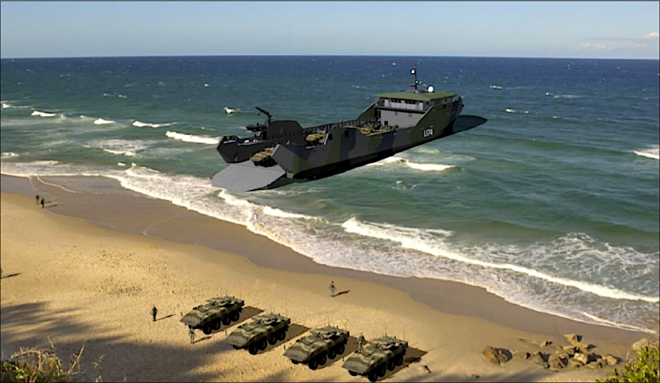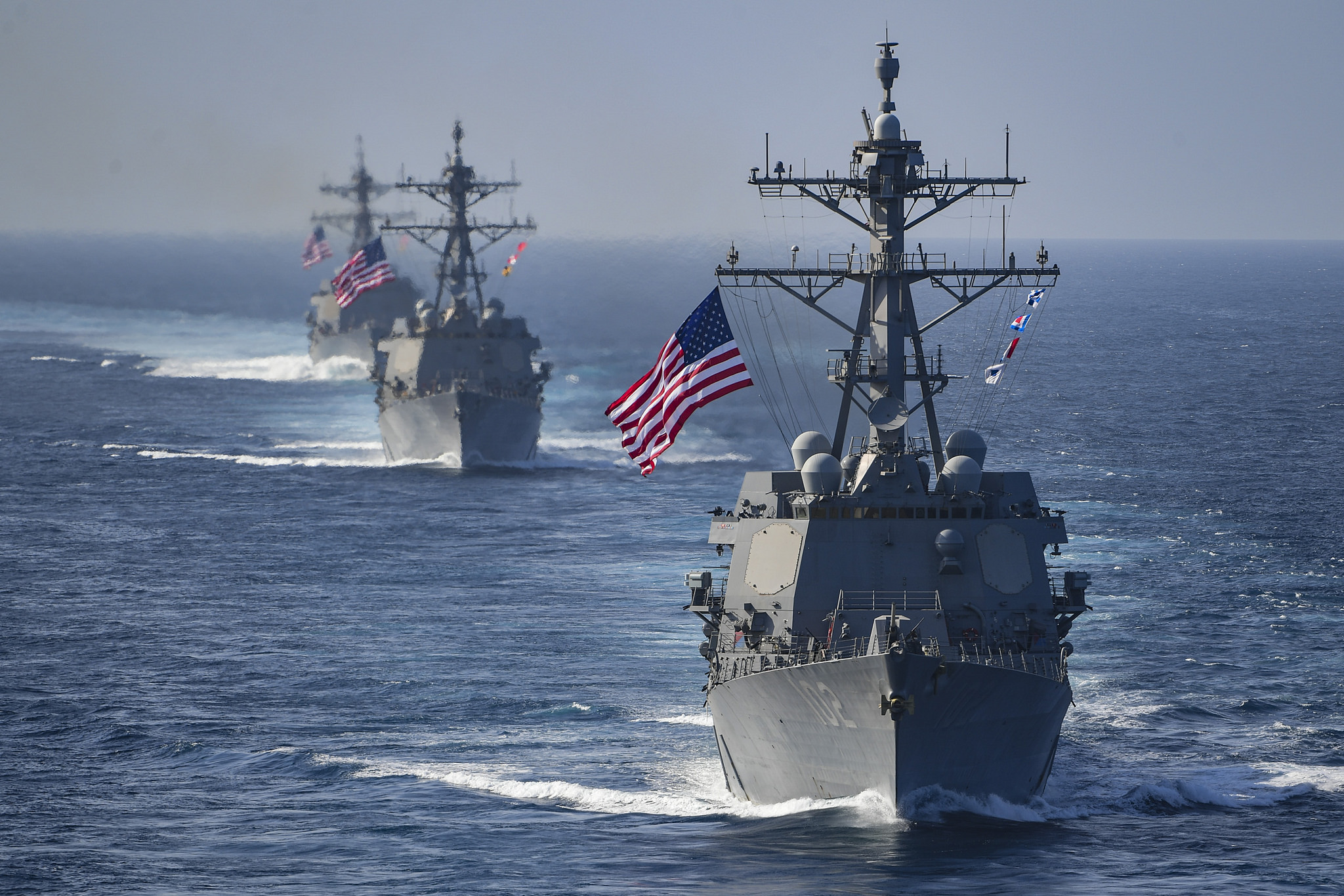The Congressional Budget Office expects the Landing Ship Medium program to cost billions of dollars more than the U.S. Navy previously estimated, though the organization noted that ongoing questions about the ship’s role create uncertainty on the final design and cost.
The office estimated an 18-ship LSM program would cost between $6.2 billion and $7.8 billion in 2024 inflation-adjusted dollars, or $340 million to $430 million per ship. This is three times more than the Navy’s comparable estimate of $2.6 billion total, or $150 million per ship.
:quality(70)/cloudfront-us-east-1.images.arcpublishing.com/archetype/2SUVWBX565B4PCXTIXKWZ2AR5Q.jpg)
The CBO, in a report released April 11, noted the program would cost between $11.9 billion and $15 billion in 2024 dollars if the service ultimately buys 35 ships, as the Marine Corps has pushed for.
The report outlined the challenges in predicting the cost of the program, given remaining questions about what the platform will look like and how it will be used, and cited inconsistencies over time between how the Navy and Marine Corps each talk about the future of this program.
For example, the Marine Corps originally proposed LSM in its Force Design 2030 modernization plan in spring 2020, calling for a vessel that would be built to commercial standards to keep costs low and to help it blend in with commercial shipping.

The Navy and the Office of the Secretary of Defense, however, have pushed for higher standards for safety and survivability, leading to a back-and-forth over design, cost and quantity.
“A central issue that remains unclear is the LSM’s concept of operations. Specifically, do Navy and Marine Corps leaders expect the ships to deploy and resupply their marines only before a war has started, such as when a crisis is building? Or would the ships also redeploy and resupply marine units during a conflict, when those ships would be potentially vulnerable to detection and attack by opposing military forces?” the report asked.
“A ship that is not expected to face enemy fire in a conflict could be built to a lesser survivability standard, with fewer defensive systems than a ship that would sail in contested waters during a conflict. Recent experiments by the Marine Corps suggest that the naval services are still determining what the capabilities of the LSM will be,” it continued.
The answers to these questions will directly affect cost.

The CBO created a cost estimate based on a hybrid military-commercial ship design, as Navy and Marine Corps leaders have indicated they’ll pursue.
Using strictly military standards associated with traditional amphibious warships would add $2 billion to $3 billion to the cost of an 18-ship program, and $5 billion to $6 billion to the price of a 35-ship program, the report noted.
The use of commercial standards would lower the cost estimate by $4 billion to $8 billion for an 18-ship program, and by $5 billion to $10 billion for a 35-ship program, the report added.
Additionally, the CBO report noted uncertainty over how many ships the Navy will ultimately buy. The service has discussed buying 18, while the Marine Corps insists it needs 35.

“The total cost of the program — as opposed to the average cost of individual ships — will largely be determined by the number of LSMs the Navy ultimately buys,” the report noted.
The cost will also depend on how many shipyards the Navy puts on contract to build LSMs and at what annual rate. This might look different if the services hurried to get as many out as quickly as possible, versus if they stick to the current plan of buying one or two per year for the first five years.
The Navy originally planned to begin buying LSMs in fiscal 2023, but that was pushed back to fiscal 2025 for budgetary reasons. The Navy has awarded contracts to five companies to help refine the requirements for the ship type, and in January the service released a request for proposals to industry for the contract to design and build the first LSMs.
The vessels will have a draft of 12 feet, be 200-400 feet long, be able to transit 3,500 nautical miles at a speed of 14 knots, beach themselves to load and unload vehicles and supplies, have a crew of 70 sailors, and embark 50 Marines, among other specifications.





